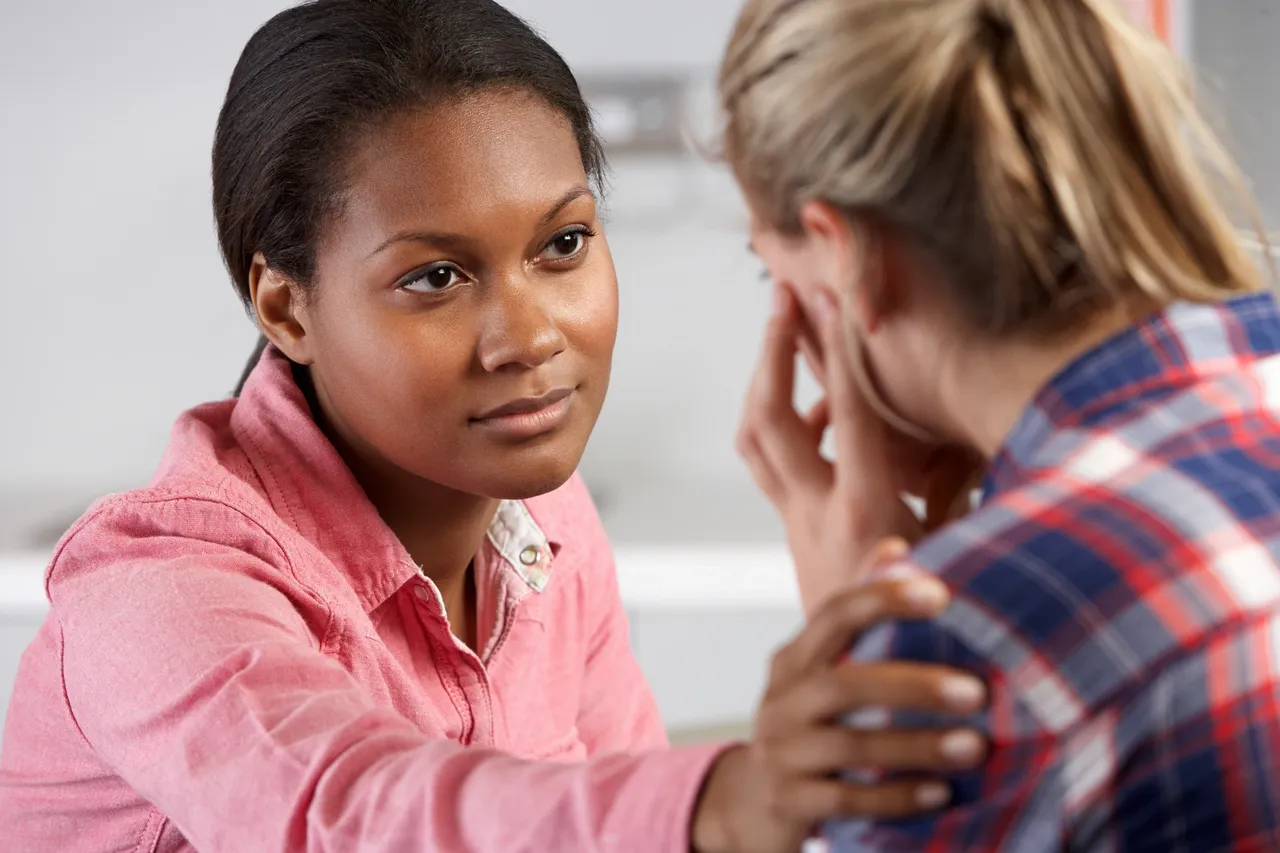Understanding Moodiness vs. Emotional Distress
You know that moment when your teen slams their bedroom door for the third time this week, and you find yourself wondering: Is this just normal behavior, or should I be worried?
It’s one of the hardest questions parents face, and honestly, you’re not alone in asking it.
Here’s the thing about moodiness — it’s actually a normal part of adolescent development. During these years, your teen’s brain is going through massive changes, particularly in areas that regulate emotions and impulse control. Hormones are fluctuating wildly. They’re navigating complex social dynamics, academic pressures, and the overwhelming task of figuring out who they are. Some irritability, occasional withdrawal, or emotional ups and downs? That’s par for the course.
Emotional distress in teens, though, looks different. When you’re identifying emotional distress, you’re watching for patterns that persist and intensify rather than come and go. The key difference isn’t just what you’re seeing — it’s how long it lasts and how much it interferes with their daily life.
Think of it this way: typical adolescent behavior might include occasional moodiness that passes within a day or two. Emotional distress sticks around, creating a shadow that doesn’t lift. Recognizing this distinction early can be the difference between getting your teen help when they need it most and watching their struggles deepen into something more serious.
If you suspect that your child is experiencing more than just typical teenage mood swings and may be facing emotional distress, it’s crucial to seek professional help. Therapy for autism near me are available which offer a variety of evidence-based treatments to help your child reach his or her full potential.
Common Warning Signs of a Struggling Teen
Recognizing warning signs of a struggling teen requires looking beyond the surface. While every adolescent experiences ups and downs, certain patterns of behavior signal deeper teen emotional distress symptoms that deserve your attention.
Emotional and Behavioral Changes
Emotional and behavioral changes often appear first. When your teen experiences persistent sadness lasting two or more weeks—not just a bad day or two—this represents a significant shift. You might notice them withdrawing from friends they once couldn’t wait to see, or suddenly dropping activities they previously loved. Frequent mood swings that seem disproportionate to the situation, along with dramatic personality changes, can indicate something more serious is happening beneath the surface.
Physical Manifestations
Physical manifestations provide equally important clues. Changes in eating habits—whether eating significantly more or less—accompanied by noticeable weight fluctuations warrant concern. Changes in socioeconomic status can also lead to such alterations in eating patterns and overall health. Sleep patterns may shift dramatically, with your teen either sleeping excessively or struggling with insomnia due to sleep deprivation. Recurring headaches, stomachaches, or other physical complaints without clear medical explanations often reflect emotional pain your teen can’t yet articulate.
Academic and Social Functioning
Academic and social functioning typically suffers when teens struggle emotionally. Declining grades, incomplete assignments, and increased school absences represent tangible adolescent mental health indicators. Perhaps most critically, any mention of self-harm, suicidal thoughts, or actual self-harming behaviors demands immediate attention—these aren’t attention-seeking tactics but genuine cries for help. It’s essential to recognize these signs early on as they are common warning signs associated with adolescent mental health issues.
When Moodiness Signals Serious Mental Health Concerns
Sometimes what looks like typical teenage angst hides deeper struggles. Recognizing serious emotional distress requires understanding how teen mental health concerns manifest differently from everyday mood fluctuations.
Serious moodiness often overlaps with clinical conditions like anxiety disorders, depression, PTSD, ADHD, and eating disorders. Your teen might display symptoms that fit multiple diagnoses—perhaps they’re both anxious and depressed, or their ADHD is compounded by trauma responses. These overlapping conditions create complex patterns that go beyond typical adolescent behavior.
Watch for these critical indicators that signal teen behavior changes and mental health crises:
- Expressions of hopelessness or despair—statements like “nothing matters anymore” or “everyone would be better off without me”
- Any verbal threats about dying or self-harm, even if they seem casual or joking
- Turning to alcohol or drugs as a way to numb emotional pain
- Sudden calmness after prolonged depression—this can indicate they’ve made a decision about ending their life and feel relief from that “resolution”
Academic and social functioning often deteriorate rapidly when teen mental health concerns become serious. Your once-engaged student might stop caring about grades entirely, or your social butterfly might delete all their social media accounts and refuse to leave their room. These aren’t just phases—they’re distress signals requiring immediate attention.
How to recognize when teen moodiness is serious comes down to intensity, duration, and impact on daily life.
Factors That Can Trigger Emotional Distress
Understanding what triggers emotional distress in teens helps us recognize when our kids need extra support. These triggers don’t always announce themselves clearly, and sometimes what seems like a small event to us can feel overwhelming to our teens.
Crisis or traumatic events often serve as catalysts for deeper emotional struggles. Family conflict, divorce, the death of a loved one, bullying at school, or even witnessing violence can shake a teen’s sense of safety and stability. Sometimes the trauma isn’t a single event but an ongoing situation—like living with a parent’s substance abuse or experiencing chronic academic pressure.
The emotional responses to these triggers can look different for each teen. Some kids respond with explosive anger outbursts that seem to come from nowhere, while others quietly pull away from friends, sports, or hobbies they once loved. You might notice your teen who used to be social suddenly spending every evening alone in their room.
Physical symptoms become the body’s way of expressing what words can’t capture. Persistent headaches, stomachaches, or unexplained fatigue without any medical explanation often point to underlying stress or trauma that needs attention.
Perhaps most heartbreaking are the feelings of guilt or helplessness that emerge without any logical reason. Your teen might blame themselves for situations completely beyond their control, carrying emotional weight that no young person should bear alone.
The Role of Family and Caregivers in Supporting Struggling Teens
Your presence in your teen’s life matters more than you might realize during these challenging moments. Family support for struggling teens begins with creating an atmosphere where honest conversations can happen without fear of judgment or dismissal. When your teen knows they can share their feelings—even the messy, confusing ones—without being lectured or having their emotions minimized, you build a foundation of trust that becomes essential during difficult times.
The caregiver role in adolescent mental health extends beyond simply noticing warning signs. It means actively listening when your teen does open up, even if what they’re saying feels uncomfortable or concerning. Sometimes the most powerful thing you can do is sit with them in their pain rather than rushing to fix everything immediately.
Supporting teens through emotional distress requires recognizing when your love and support need to be supplemented with professional help. There’s no shame in reaching out to a therapist, counselor, or mental health specialist when warning signs appear. Think of it like this: you wouldn’t hesitate to take your teen to a doctor for a broken bone, and mental health deserves the same level of attention and care.
Creating stability at home—through consistent routines, clear expectations balanced with flexibility, and regular family time—gives your teen something solid to hold onto when their internal world feels chaotic. Small gestures like family dinners, checking in about their day, or simply being physically present can communicate safety and reassurance that fosters genuine resilience and hope.
Build Bright Care Group’s Approach to Adolescent Therapy Programs
When you’ve recognized that your teen needs more support than you can provide at home, finding the right treatment environment becomes your next crucial step. Build Bright Care Group therapy offers a different kind of healing space—one that understands the delicate balance between structure and comfort that struggling teens need.
Our adolescent residential care California program serves young people ages 12 through 17 who are facing serious mental health challenges. We’ve designed our residential setting to feel less like an institution and more like a home where your child can finally breathe, heal, and rediscover hope. The safety and warmth of our environment allows teens to let their guard down and engage authentically in their recovery.
Evidence-based therapy forms the foundation of everything we do. Each adolescent receives individualized treatment plans that draw from proven therapeutic approaches—because we know that what works for one teen may not work for another. Our compassionate clinical team takes time to understand your child’s unique story, struggles, and strengths.
Build Bright Care Group adolescent therapy programs focus on sustainable well-being rather than quick fixes. We’re committed to helping your teen build lasting coping skills, healthier thought patterns, and genuine connections. This transformative treatment journey doesn’t just address symptoms—it helps your child develop the resilience they’ll need long after they leave our care.
If you’re dealing with more serious issues like teen suicidal thoughts, our skilled staff and specialized program can help. We treat autism, depression and behavioral issues in teens using a customized curriculum for success.
FAQs (Frequently Asked Questions)
How can I distinguish between typical teenage moodiness and emotional distress in my teen?
Typical moodiness involves normal developmental mood swings during adolescence, while emotional distress includes persistent sadness lasting two or more weeks, social withdrawal, frequent dramatic mood swings, self-harm behaviors, and changes in eating or sleeping patterns. Early recognition of these signs is crucial to prevent worsening mental health.
What are the common warning signs that indicate a teen might be struggling emotionally?
Common warning signs include persistent sadness, avoidance of friends or activities, dramatic personality changes, self-harm or suicidal talk, changes in eating habits and sleep patterns, unexplained physical complaints like headaches or stomachaches, and declining school performance with increased absenteeism.
When does teenage moodiness signal serious mental health concerns?
Teen moodiness signals serious mental health concerns when symptoms overlap with anxiety disorders, depression, PTSD, ADHD, or eating disorders. Signs such as feelings of hopelessness, verbal threats about dying, increased substance use as coping, unusual calmness after depression episodes, and significant behavioral changes affecting academic and social functioning require immediate attention.
What factors commonly trigger emotional distress?
Emotional distress can be triggered by crisis or traumatic events such as family issues, bullying, or loss. These triggers often lead to emotional responses like anger outbursts, withdrawal from activities, unexplained physical symptoms linked to stress or trauma, and feelings of guilt or helplessness without a clear reason.
How can family and caregivers support teens experiencing emotional distress?
Family and caregivers play a vital role by fostering open communication and creating a supportive home environment. Encouraging professional consultation when warning signs appear and establishing stability and reassurance help build resilience and hope in struggling teens.
What approach does Build Bright Care Group use for adolescent therapy programs?
Build Bright Care Group offers compassionate and comprehensive mental health treatment designed for adolescents ages 12–17. Their residential care provides a safe and comfortable environment that feels like home. They utilize evidence-based therapeutic approaches tailored to individual needs with an emphasis on sustainable well-being through transformative treatment journeys.











